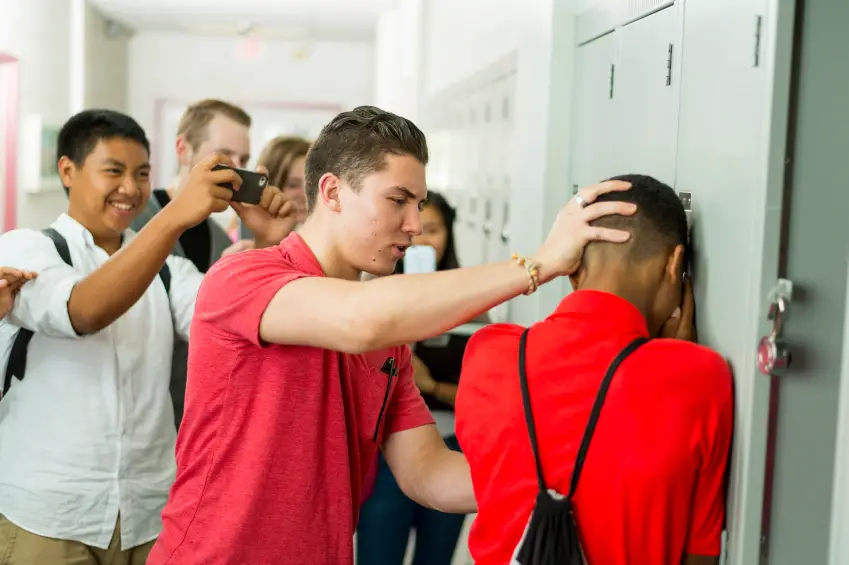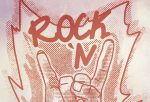There are many forms of bullying, and there are many opinions about what is considered bullying and what is not. There is so much that encompasses this topic, which makes it hard for people to know all the ways one can be hurt. However, to help give a broad perspective, the core elements of bullying are: unwanted aggressive behavior, observed or perceived power imbalance, and repetition of behaviors or high likelihood of repetition. One in three U.S. students say they have been bullied at school. Being taunted is not as harmless as adults make it out to be, believing that it’s all just part of being a kid.
As someone who has been bullied from elementary school to high school, I can truly say that it triggered depression and social anxiety within my life, and these effects are still issues that I struggle with today. I did not mind going to school to learn, but being picked on changed school from paradise to purgatory with little to no effort. I woke up every morning, dreading the very idea of going to school—sadly, that is a common reaction for those who have been bullied.
In a survey taken in 2013, it was found out that “on average across 39 states survey, 7.2 percent (range: 3.6 percent – 13.1 percent) of students admit to not going to school due to personal safety concerns. Many dread the physical and verbal aggression of their peers, and many more attend school in a chronic state of anxiety and depression.” The U.S. Department of Justice even states, “160,000 kids per day do not attend school for fear of being bullied.” Yet, there are people who believe harassment is not prevalent in schools, that it’s becoming less of an issue. As long as there’s even a smidgen of an issue, it’s an issue, and one country has strategized a way to conquer it.
Earlier this month, China implemented a program for teenage tormentors where young people in Beijing convicted of bullying can now be given sentences involving hard labor. Yes, you read right, hard labor as a punishment for terrorizing other kids. In a time where bullying is considered “a social cancer,” this solution does not seem too farfetched—in fact, America might want to take notes on how China’s new program is set up.
Fourteen girls, from the ages of 15 to 17, were involved in the five-to-seven-day trial program which was run by the Tongzhou District People’s Court with local schools; one of the students was given a sentence of one year and 10 months. During the time of containment, young offenders are to take part in a demanding course, which involves military training. You would think that is the end of it, but after the course, the schools then assess whether the offenders are fit to return to their studies or if they should be expelled. Meaning, even if you complete the course, you still aren’t free from other consequences and repercussions of your actions.
Is this too harsh? Some media users in China do not think so; honestly, they think the sentencing is too light. Someone even mentioned Yang Yongxin’s electro-convulsive therapy, but let’s not go that far. Let’s look at the hard truth.
The truth of the matter is America needs to jump on board with a method like China’s because the negative effects of bullying are far too great to ignore. Anxiety and depression are steps that can lead to suicide; suicide and bullying are strongly linked together, even if adults would rather delude themselves into believing that is not true. Statistics show the following, “For every suicide among young people, there are at least 100 suicide attempts. Over 14 percent of high school students have considered suicide, and almost 7 percent have attempted it.” Anything above zero percent is too much. Speaking as one of those statistics, the tormentors get off too light while their victims are forced to endure actions they shouldn’t have to endure.
America needs to make kids and teens accountable for their actions. Simply having anti-bullying campaigns by favorite actors, singers or sport figures is not enough. If there is more to lose, a kid might question if bullying is worth the hassle.
Now, this does not mean every single act of intimidation should result in immediate enrollment in a boot camp program. There should be a system in place, a system where a threatened victim feels safe in reporting the crimes against them. Instructors need to be more involved in stopping the harassment in classrooms. Thus, the severity of the crime should be considered and reviewed by the teacher, principal and the parents of both the bully and the victim. Maybe a three-strikes-you’re-out system could work, however, there needs to be an agreement between everyone involved that if certain behaviors are exhibited when they were already reprimanded, the terrorizer needs to be accountable for his or her actions.
Often times, parents seem reluctant to allow any harsh punishments against their children. With the program in China, the training is conducted under the supervision of the teenager’s parents. The parents are on board with stopping bullying by any means necessary, even if that means sending their child off to go through strict training—that isn’t all that the program entails. The offenders also take part in other activities, like listening to lectures and receiving psychological support. So, it’s not all about punishment, but also rehabilitation.
Sending a bully to detention or suspending them for a number of days does not fix anything. It only gives the victim a few days of peace, and then the tormentor is released from the temporary confinement. This method has been proven to be ineffective. While no reports have been given about China’s program being successful or unsuccessful yet, there is at least an effort on the school and the parents’ parent to correct the negative behavior through physical, emotional and mental means.
Education is essential for everyone. Thus, America needs to consider initiating a program to educate bullies about their actions and seek resolution. China has taken a step in the right direction as far as I’m concerned. Hopefully, America takes the same step in discovering a way to protect its youth.

















